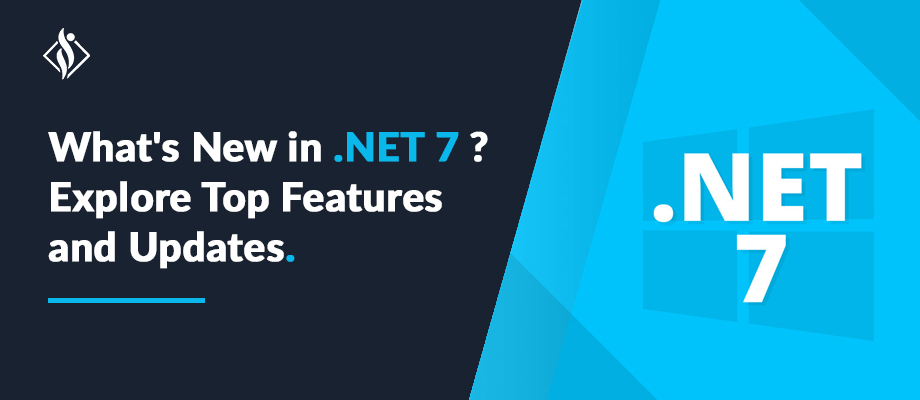Home » .NET Development » Explore 15 Dot NET Tools to Elevate Your Development
Explore 15 Dot NET Tools to Elevate Your Development

The world of .NET development is continuously evolving, and as with any dynamic landscape, it demands the right tools to navigate it efficiently. While Dot NET itself is a versatile and robust framework, the ecosystem of development tools surrounding it further amplifies its potential. These tools not only enhance the development process but also augment the productivity of developers manifold.
5 Benefits of .NET Development Tools
- Enhanced Efficiency: These tools streamline the coding process, cutting down the development time.
- Error Reduction: Advanced error detection features mean less time debugging and more time developing.
- Integrated Environment: Many tools offer an all-in-one solution, making development smoother and more intuitive.
- Scalability: They provide frameworks to grow your application as your business expands.
- Simplified Deployment: With automation tools and built-in features, deploying applications becomes a breeze.
Top 15 Dot Net Development Tools
Exploring the .NET Framework Trends demands a comprehensive set of tools. These tools not only enhance productivity but also ensure the creation of robust, high-performing applications. Whether it’s an integrated development environment, a performance profiler, or a package manager, each tool plays a pivotal role in the development journey while delivering Dot NET development services to all clients.
1. Visual Studio: The Citadel of Coding
Launch History:
In the annals of programming history, Visual Studio is a name that resonates with reverberating echoes. An integrated development environment (IDE) par excellence, Visual Studio is not merely a tool—it’s an expansive universe unto itself.
Capabilities:
From its inception, Visual Studio pledged allegiance to versatility. It graciously accommodates a plethora of programming languages, ranging from C# and VB.NET to Python and JavaScript. Whether the ambition is to craft web applications, mobile apps, or cloud solutions, this IDE stands as the unwavering sentinel, facilitating the creation process.
Features & Proficiency:
- Code Editor: An intuitive space where syntax highlighting, code completion, and IntelliSense reign supreme.
- Debugger: Offers a seamless experience, allowing developers to trace code execution without disrupting the application flow.
- Designer Tools: A suite of functionalities including a WPF designer, Web designer, Class designer, and more.
- Extensions: Visual Studio Marketplace is a vibrant bazaar where extensions await, ready to augment the IDE’s capabilities.
2. Stackify Prefix: The Oracle of Observations
Launch History:
Venturing into the labyrinth of code, Stackify Prefix emerges as the guiding light, offering invaluable insights into real-time application performance.
Capabilities:
Imagine having the prescience to observe and rectify coding anomalies before they metamorphose into colossal challenges. Stackify Prefix grants this foresight, bestowing developers with a granular view of application behavior.
Features & Proficiency:
- Performance Monitoring: Chronicles the journey of web requests, capturing SQL queries, HTTP calls, and other pivotal data.
- Detailed Traces: From method durations to log statements, no stone remains unturned.
- Error Highlighting: It flags the anomalies, ensuring they don’t remain ensconced in the shadows.
3. LINQPad: The Alchemist’s Cauldron
Launch History:
In the grand tapestry of data querying tools, LINQPad shimmers like a rare gem. While it has earned accolades for its querying prowess, it also moonlights as an impromptu playground for C#/F# code snippets.
Capabilities:
LINQPad is not just about writing LINQ queries. It allows developers to experience the magic of instantly executing any C# or F# expression. With its potent combination of versatility and immediacy, LINQPad stands as an invaluable ally for developers.
Features & Proficiency:
- Instant Testing: Run code snippets without the cumbersome process of creating a new project.
- Integrated Debugger: Debug any kind of .NET code with utmost ease.
- Rich Output Formatting: Experience results in a rich text format, with integrated data visualizations.
4. dotConnect for Oracle: The Harmonious Harbinger
Launch History:
In the realm of data connectors, dotConnect for Oracle reigns supreme. As an ORM-enabled tool, it offers a high-performance pathway, bridging .NET applications and Oracle databases in a symphonic ballet of data interaction.
Capabilities:
dotConnect for Oracle eradicates the complexities of database interactions, making them feel almost sylphlike. Developers can craft and execute database operations with an elegance and simplicity previously thought unattainable.
Features & Proficiency:
- Direct Mode: Establish a direct connection, circumventing the Oracle client.
- High Performance: Experience lightning-fast data access, bolstered by advanced caching and optimized SQL generation.
- ORM Support: Enjoy compatibility with major ORMs, including Entity Framework, NHibernate, and LinqConnect.
5. NuGET: The Luminary of Libraries
Launch History:
In the firmament of Dot NET package management, NuGET shines as the brightest star. As the .NET package manager, NuGET facilitates the discovery, installation, and reference of code packages in .NET projects, akin to a librarian curating a collection of ancient scrolls.
Capabilities:
With its vast repository of third-party libraries and tools, NuGET ensures that developers don’t have to reinvent the wheel. They can deftly incorporate these packages into their projects, leading to streamlined workflows and enriched functionalities.
Features & Proficiency:
- Easy Integration: NuGET’s seamless integration with popular IDEs, including Visual Studio, ensures that adding, updating, or removing packages is a cinch.
- Dependency Management: NuGET automatically manages the dependencies of packages, ensuring cohesiveness and compatibility.
- Version Control: Maintain and manage different versions of libraries without breaking a sweat.
6. NDepend: The Codex of Complexity
Launch History:
In the art of software craftsmanship, the elegance of code is paramount. Enter NDepend – an adept tool that simplifies the Herculean task of understanding code dependencies, visualizing architecture, and measuring code quality.
Capabilities:
NDepend doesn’t merely analyze code; it offers a holistic perspective, aiding developers in comprehending the multifaceted intricacies of large codebases.
Features & Proficiency:
- Visual Representation: With treemaps, matrix, and dependency graphs, visualize the labyrinthine terrains of code.
- Technical Debt Estimation: Evaluate and quantify the cost of remedying code inefficiencies.
- Quality Metrics: From cyclomatic complexity to comment rates, get a panoramic view of various code metrics.
7. Postman: The Vanguard of Virtual Conversations
Launch History:
In the digital realm, communication is orchestrated through APIs. Postman, though not strictly a .NET tool, is an API client that amplifies the potency of these digital dialogues, ensuring they are eloquent, efficient, and error-free.
Capabilities:
Postman serves as a nexus for designing, testing, and documenting APIs. It accentuates the collaborative nature of development, providing a centralized space where teams can conjure the magic of effective API conversations.
Features & Proficiency:
- Seamless Testing: Harness the power of automated tests, ensuring APIs are robust and resilient.
- Mock Servers: Simulate API responses before any backend logic is conjured.
- Collaboration Cohesion: Share collections, environments, and other components with the team, fostering collective innovation.
8. ReSharper: The Maestro’s Manuscript
Launch History:
In the symphony of code, ReSharper acts as the conductor’s baton, refining the rhythms and enhancing the melodies. Integrated with Visual Studio, ReSharper is a force multiplier, elevating the IDE’s capabilities.
Capabilities:
From code quality analysis to refactoring assistance, ReSharper ensures that the code resonates with clarity, efficiency, and innovation.
Features & Proficiency:
- Code Analysis: Dive deep into the oceans of code, pinpointing issues and inefficiencies.
- Instant Fixes: ReSharper not only identifies problems but offers instant remedies.
- Refactoring Capabilities: With over 250 refactorings, transform the codebase to echo the harmonies of efficiency.
9. .NET Reflector: The Codicologist’s Compass
Launch History:
In the archaeology of code, .NET Reflector is the indispensable compass. It lets developers explore, navigate, and understand the intricacies of any Dot NET assembly, unravelling the mysteries with precision.
Capabilities:
Whether it’s about decompiling third-party assemblies or peeling back the layers of your own code, .NET Reflector serves as the magnifying glass, revealing minute details with unparalleled clarity.
Features & Proficiency:
- Decompilation: Transmute compiled .NET assemblies into readable C# or IL code.
- Assembly Browsing: Navigate, analyze, and comprehend the intricacies of .NET assemblies.
- Debugging: Delve into third-party assemblies, even if there’s no source code, and squash those pesky bugs.
10. Chocolatey: The Conductor of Configurations
Launch History:
Like the alchemists of old who sought to transmute lead into gold, Chocolatey transforms the mundane task of software management into an effortless endeavor. As a Windows package manager, Chocolatey breathes life into seamless software installations, upgrades, and maintenance routines.
Capabilities:
In Chocolatey’s domain, automation takes precedence. The power to install, update, or uninstall software with a single command makes it an invaluable companion for .NET developers.
Features & Proficiency:
- Scriptable Installations: Automate and streamline software setups with scripts.
- Centralized Repository: Access a galaxy of packages tailored for various developmental needs.
- Version Pinning: Maintain specific software versions, ensuring consistent development environments.
11. SQL Complete: The Symphony of Syntax
Launch History:
In the grand ballroom of database development, SQL Complete dances gracefully to the rhythm of auto-completion and formatting. Integrated with SQL Server Management Studio (SSMS) and Visual Studio, this tool elegantly refines the SQL writing process.
Capabilities:
SQL Complete offers a palette of functionalities to painters of code, making SQL scripting more intuitive, efficient, and error-free.
Features & Proficiency:
- Code Completion: Navigate the labyrinth of SQL syntax with ease, leveraging intelligent predictions.
- Code Snippets: Insert commonly used SQL patterns, accelerating the scripting process.
- Syntax Checking: Identify and rectify SQL errors before they manifest into larger challenges.
12. NCrunch: The Timebender of Testing
Launch History:
In the relentless race against time, NCrunch emerges as a time-bender for developers. It’s an automated concurrent testing tool for Visual Studio, constantly running tests in the background, providing immediate feedback.
Capabilities:
NCrunch transforms the testing paradigm. Instead of tests being an afterthought, they become an intrinsic part of the development process.
Features & Proficiency:
- Parallel Execution: Utilize the full power of your machine, running multiple test threads concurrently.
- Inline Exception Details: Pinpoint the source of issues without sifting through test output.
- Code Coverage: Visual indicators guide developers, showing which parts of the code are under test.
13. Entity Developer: The Artisan of Architecture
Launch History:
Every masterpiece requires a blueprint. For Dot NET developers, Entity Developer emerges as the masterful architect, crafting ORM models that serve as the foundation for robust applications.
Capabilities:
With its intuitive design interface, Entity Developer allows developers to visualize and manipulate their ORM models, be it Entity Framework, LinqConnect, NHibernate, or Telerik Data Access.
Features & Proficiency:
- Visual Designer: Sculpt and shape ORM models using drag-and-drop functionalities.
- Code Generation: Auto-generate C# or Visual Basic code, tailored to the developer’s specifications.
- Database Synchronization: Keep ORM models and databases in harmony, ensuring cohesiveness.
14. JetBrains Rider: The Maestro of Multi-platform
Launch History:
Amidst the pantheon of .NET IDEs, JetBrains Rider holds a distinctive torch, illuminating the path of cross-platform development. A product of JetBrains, Rider offers a harmonious blend of ReSharper’s capabilities with the versatility of IntelliJ.
Capabilities:
Rider transcends boundaries. Whether it’s Dot NET Framework, .NET Core, or Mono, Rider navigates these terrains with finesse, offering a consistent development experience.
Features & Proficiency:
- Deep Code Insight: Leverage the power of ReSharper within Rider, ensuring code quality and efficiency.
- Database Tools: Integrated database tools make it a cinch to query, explore, and modify data.
- Version Control: Seamless integration with popular VCS like Git, Mercurial, and Perforce.
15. NUnit: The Custodian of Quality
Launch History:
In the quest for excellence, NUnit emerges as the guardian of quality. As a unit-testing framework, it ensures that every line of .NET code is subjected to rigorous scrutiny, ensuring the delivery of robust applications.
Capabilities:
NUnit isn’t merely about identifying issues. It’s about instilling a culture of quality, making testing an inherent part of the development lifecycle.
Features & Proficiency:
- Attribute-Based: Easily demarcate test cases, setups, and teardowns using intuitive attributes.
- Assertion Library: An extensive repertoire of assertions to validate test results.
- Parallel Execution: Expedite the testing process by running multiple tests concurrently.
Factors to Consider When Choosing Your .NET Tool
Selecting the perfect Dot NET tool for your project is not just about what’s popular. Instead, the decision should be driven by:
- Project Requirements: What does the project necessitate? Does it need extensive database operations, or is it more front-end focused?
- Integration Capabilities: The chosen tool should seamlessly integrate with other tools in your tech stack.
- Usability: It should have an intuitive interface, reducing the learning curve for developers.
- Support and Documentation: Adequate documentation and community or official support can significantly ease the adaptation process.
- Cost-effectiveness: While free tools are enticing, sometimes paid tools offer features that can amplify productivity enough to justify their cost.
Conclusion
In the landscape of .NET Framework Trends, there’s an expansive array of tools designed to boost efficiency and enhance code integrity. Yet, the most effective tool is invariably the one that seamlessly matches a project’s distinct needs and complements a developer’s process.
As technology continues to advance, developers should remain adaptable, always open to new tools that could streamline their work further. The tools mentioned here stand as a testament to the innovation inherent in the .NET ecosystem, and harnessing their power can unquestionably lead to unparalleled development efficiency.
I am working as Full Stack Developer at Samarpan Infotech which always able to learn the latest technologies and architectural systems research and development. Strongly believe in "If you live each day as it was your last, someday you'll most certainly be right".



